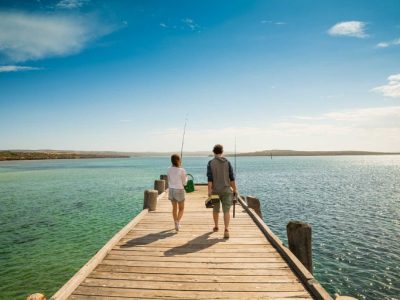NATIONAL ACTION FOR COASTAL ADAPTATION

Venus Bay, Eyre Peninsula (pc: South Australia Tourism)
At the time of any federal election, it is interesting to see how major parties consider the broader issues involving coastal adaptation into the new climate era. Over the years, I have noted that relatively little attention is given to such issues at least as reported in the media. Various groups such as ACS, Australian Coastal Councils and Sydney Coastal Councils Group have submitted ideas for inclusion in party platforms. And there have been politicians such as Jenny George in the past who have taken the time to make sure that at least one of the major parties have been active in this space. Of course the Great Barrier Reef does get attention, but that is only one area of national coastal interest that is potentially going to be adversely impacted by climate change as documented in various reports to the Commonwealth Parliament.
It was pleasing to see how the NSW Parliament recently responded to legislation put forward by the Minister for Planning, Rob Stokes. All parties agreed with the intent of Government to provide a better management framework to address the potential impacts of natural hazards on built and natural assets including impacts associated with climate change. Seven hazards have been identified in the new Coastal Management Act 2016 along with the need to identify coastal vulnerability areas under the new Coastal Management State Environmental Policy (SEPP). The hazards are listed in Section 4 of the Act, while Objective 3 (f) specifies the need to mitigate current and future risks from coastal hazards, taking into account the effects of climate change. Debates in Parliament raised the question of how climate change issues will specifically be addressed under this legislation.
While it is great to see how states such as NSW are attempting to meet coastal adaptation challenges, I am frequently asked what can be done at a federal level. Many attempts have been made at producing a national policy, even national coastal legislation mirrored on that of the USA (1972). For a variety of reasons there has been a reluctance on the part of the Australian Government as far back as 1979 to take on board these suggestions. Yet as pointed out by work of the previous Department of Climate Change and its various advisory bodies, there are huge national costs of the order of $ 200b confronting the nation in decades to come. While these estimates remain to be clarified there is no doubting the cost of natural disasters to the nation.
There is the potential for climate forces, as documented in the historical record, to be exacerbated by sea level rise and changes in the nature of extreme storm events. Recent work on this issue summarised by the Productivity Commission and others point to the increased need to invest in pre-disaster planning and mitigation activities. Events of 2011 in southern Queensland cannot be forgotten involving a national tax levy. Lives, livelihoods and lifestyles for much of our nation’s population can be adversely affected by natural coastal disasters; there is much to fear but also there is much we can do to reduce that fear.
In early July in Adelaide, NCCARF will host another adaptation conference. It will cover a range of adaptation issues including those of the coast. It will be a chance to learn more of their exciting new tool, CoastAdapt. This is a significant national investment that we hope will make a difference. But of great concern is whether the next federal government will decide to continue into the future its investment in coastal adaptation, like we see at NCCARF, to ensure that the nation as a whole is better equipped to tackle the challenges of not just the new climate era, but also the disasters that can hurt communities and the economy tomorrow.
Words by Prof Bruce Thom. Please respect Bruce Thom’s thoughts and reference where appropriately: (c) ACS, 2016, posted 4th July 2016, for correspondence about this blog post please email admin@australiancoastalsociety.org.

